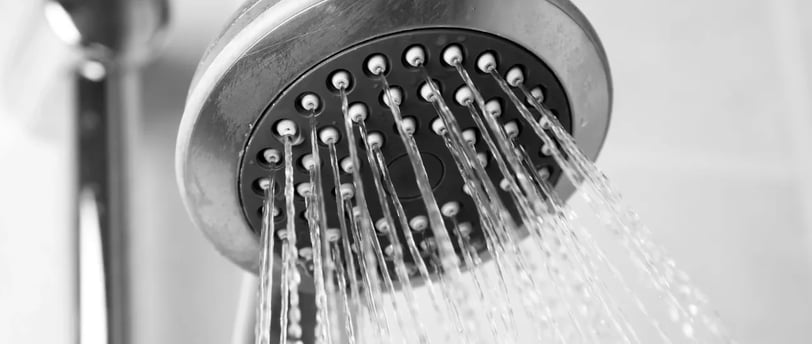How to fix a leaky shower head
7/3/20233 min read


A leaky shower head is one that leaks water from the bottom of its base. This can be a serious problem, as it wastes both water and energy. If you have a leaky shower head, it's important to fix it as soon as possible so you can save money on your utility bills.
In this blog post we'll discuss what causes a leaky shower head and how to fix it.
Tools and Materials Needed
Adjustable wrench
Screw
head* Plumber's tape or Teflon tape (optional)Silicone caulk (optional)
Steps to Fix a Leaky Shower Head
Turn off the water supply.
Remove the old shower head and clean it with soap and water to remove any dirt or mineral deposits that may be causing it to leak.
Install your new shower head by screwing it onto the pipe, then tightening with an adjustable wrench until snug (but not too tight). Test out your work by turning on the faucet and checking for leaks around where you installed your new fixture--if there are no leaks, then congratulations! You've successfully fixed a leaky shower head! If there are still issues with leaking after doing this step, try tightening things up even more until they stop leaking completely; if this doesn't work either, try re-sealing around where you put everything together using plumber's or other kind of sealant meant specifically for plumbing repairs
Tips for Fixing a Leaky Shower Head
Use plumber's tape.
Apply silicone caulk.
any grime or mold before installing a new shower head
Troubleshooting a Leaky Shower Head
If you're dealing with a leaky shower head, it's important to troubleshoot the problem first.
Check for blockages: If your shower head is clogged with hair and soap scum, this could be the cause of your leaky faucet. To unclog it, remove the nozzle from its base and use an old toothbrush or pipe cleaner dipped in vinegar or baking soda solution to scrub out any buildup inside. Then rinse thoroughly before reattaching it to its base.
Check for broken parts: If you think one of your pipes might have or cracked (which would explain why water comes out everywhere), turn off both hot/cold water valves under your sink before attempting any repairs--you don't want to make things worse! Then examine all exposed pipes closely; if any seem damaged or cracked beyond repair, call a plumber right away so they can assess whether they need replacing entirely or just some quick patchwork until you can afford new ones later down the road
Preventative Maintenance
Inspect the shower head regularly. If you don't know how to inspect your shower head, it's time to learn. This will help you determine if there are any issues with it and if you need to replace it not. Clean the shower regularly by using vinegar and baking soda or another cleaning solution of your choice (just make sure it doesn't damage plastic). Replace the shower head when necessary; this is especially important if you have hard water in your area because minerals from this type of water can build up on the inside surface of any metal parts over time, causing them to corrode and leak eventually
Troubleshooting a Leaky Shower Head
The first thing you should do is check for blockages. If you have a shower head that is blocked, it will not be able to deliver water properly and may cause leaks. You can check for blockages by removing the shower head from its holder and placing it under running water. If there are no leaks, then this means your problem lies elsewhere.
If you've ruled out a blocked pipe or broken parts as causes of your leaky shower head and still haven't found an there's one more thing left to check: loose connections between pipes or parts of your plumbing system could also be causing problems with how much pressure gets through them when they're turned on (or off).
Preventative Maintenance
Inspect the shower head regularly. Check for any signs of wear or damage, including rust and mineral deposits. If you see any of these things, it's time to replace your shower head. the shower head regularly with vinegar and baking soda (or other natural cleaner) to remove hard water stains and soap scum buildup that can contribute to leaks over time.
Replace your old or worn out shower heads with new ones as soon as possible!
Conclusion
The repair of a leaky shower head is an easy and inexpensive task. Follow these steps to fix a leaky shower head:
Turn off the water supply to your home, or at least turn off the valve that supplies water to the showerhead you are working on.
Remove any debris from around the base of your showerhead with a cloth or paper towel, then unscrew it from its base by turning counterclockwise (righty-tighty lefty-loosey). If there's corrosion present, use rubbing alcohol on an old toothbrush or cotton swab dipped in vinegar; this will help remove mineral buildup that can cause
